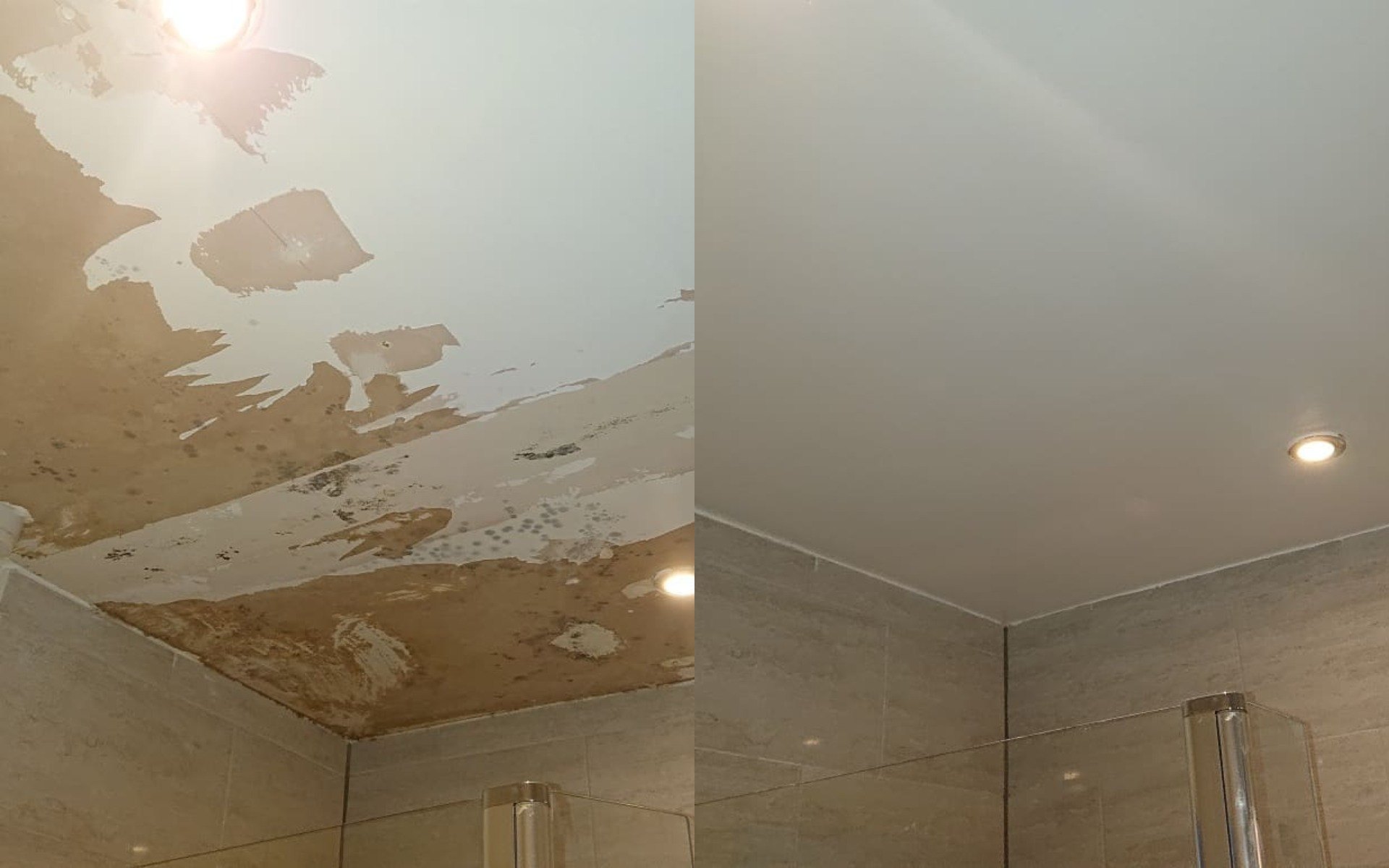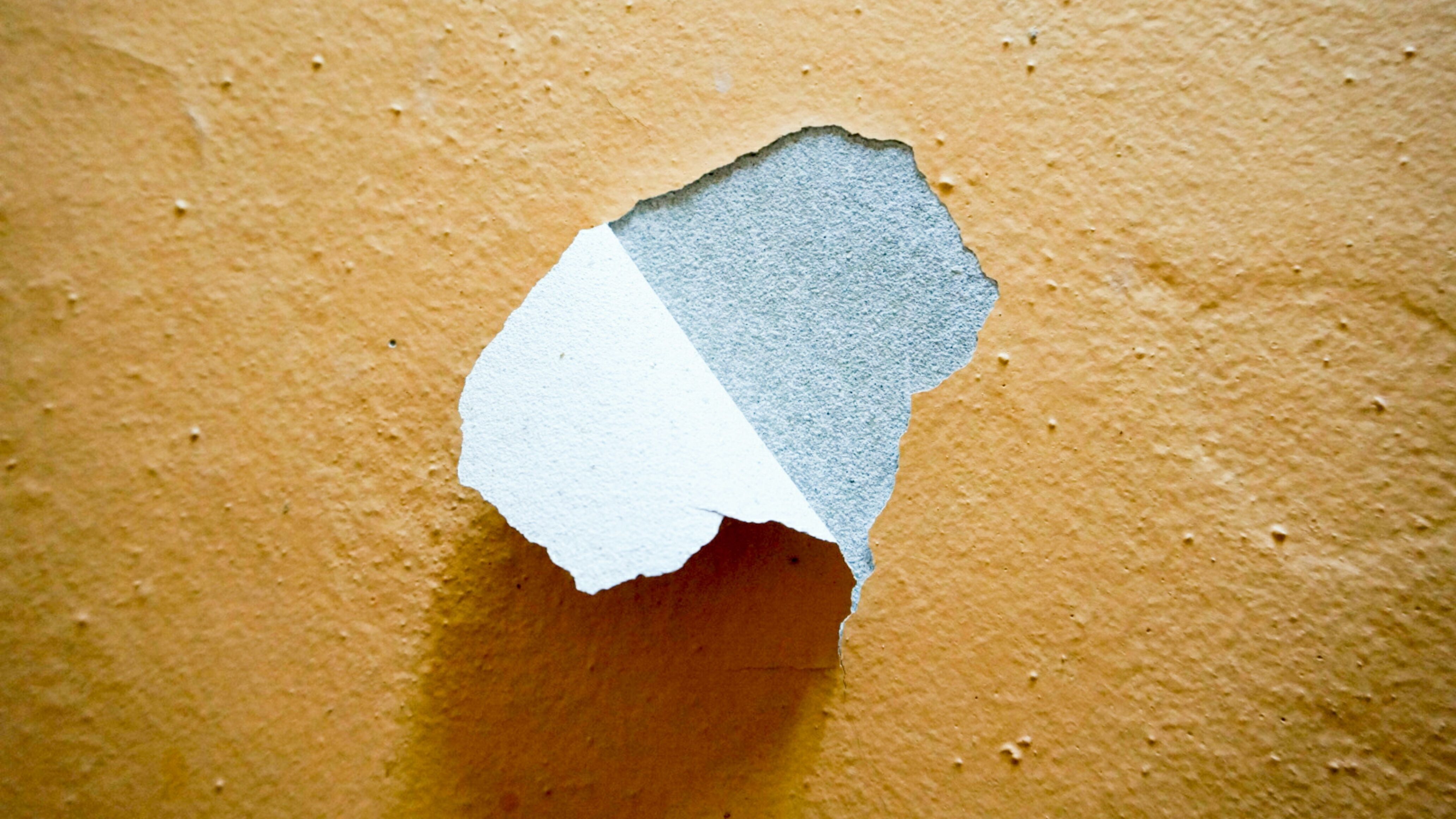Causes of Paint Blistering in Bathrooms

Paint blistering in bathrooms is a common problem that can be caused by a variety of factors. Understanding the causes is crucial for preventing this issue and maintaining a beautiful and functional bathroom.
Moisture and Humidity
Bathrooms are naturally humid environments due to the presence of showers, bathtubs, and sinks. Moisture and humidity are the primary culprits behind paint blistering in bathrooms. When water vapor in the air condenses on surfaces, it can seep into the paint layer, causing the paint to detach from the wall. This detachment creates the characteristic blisters that we often see.
- Condensation: Warm, moist air in the bathroom rises and cools as it comes into contact with cooler surfaces, like walls and ceilings. This cooling process causes the moisture in the air to condense, forming tiny water droplets. These droplets can then seep into the paint, leading to blistering.
- Lack of Ventilation: Poor ventilation allows moisture to accumulate in the bathroom, increasing the likelihood of condensation and paint blistering. Without proper ventilation, the air becomes saturated with moisture, creating a breeding ground for mold and mildew, which can further damage the paint.
- Inadequate Sealing: Gaps and cracks in the bathroom’s walls, around windows, or in the shower area can allow water to penetrate behind the paint, causing blistering. Proper sealing of these areas is essential to prevent moisture from entering and damaging the paint.
Types of Paint Prone to Blistering
Not all paints are created equal when it comes to resisting moisture. Certain types of paint are more susceptible to blistering in bathrooms due to their properties.
- Oil-Based Paints: While oil-based paints are known for their durability and long-lasting finish, they can be prone to blistering in humid environments. This is because oil-based paints are less breathable than other types, trapping moisture within the paint layer.
- Latex Paints: Latex paints are generally more moisture-resistant than oil-based paints, but they can still blister if not applied correctly or if the bathroom is poorly ventilated.
Impact of Poor Ventilation and Inadequate Sealing, Paint blistering in bathroom
Poor ventilation and inadequate sealing significantly contribute to paint blistering in bathrooms.
- Poor Ventilation: Insufficient ventilation allows moisture to linger in the bathroom, creating an environment conducive to condensation and paint blistering. The moisture-laden air, unable to escape, condenses on cooler surfaces, leading to paint damage.
- Inadequate Sealing: Gaps and cracks in the bathroom’s walls, windows, or shower areas act as entry points for water. Water seeping behind the paint layer can cause it to detach, resulting in blistering.
Preventing Moisture Buildup
To prevent paint blistering in bathrooms, it’s essential to control moisture levels.
- Adequate Ventilation: Install and use exhaust fans to remove moisture from the air. Ensure the fan is powerful enough to effectively ventilate the bathroom, and run it during and after showers or baths.
- Proper Sealing: Seal any gaps or cracks in the bathroom’s walls, windows, or shower areas to prevent water from penetrating behind the paint.
- Minimize Water Splashes: Use shower curtains or glass doors to prevent water from splashing onto the walls during showers.
- Wipe Down Surfaces: After showers or baths, wipe down the walls and floor to remove any excess moisture.
Identifying and Diagnosing Blistering: Paint Blistering In Bathroom

Identifying and diagnosing paint blistering is the first step in resolving this common bathroom issue. A careful visual inspection can reveal crucial clues about the root cause of the problem, guiding you towards the appropriate solution.
Visual Inspection
A thorough visual inspection is essential for understanding the nature and extent of the blistering. Here’s a step-by-step guide to help you identify the problem:
- Examine the affected area: Start by observing the overall affected area. Note the size, shape, and distribution of the blisters. Are they clustered in a specific location, or are they scattered across the entire surface?
- Inspect the blister surface: Observe the surface of the blisters. Are they smooth, rough, or textured? Are there any signs of cracking or peeling?
- Check for moisture: Gently press on the blisters. If they feel soft or spongy, this could indicate moisture trapped beneath the paint.
- Look for underlying damage: Carefully check for any underlying damage, such as cracks or holes in the wall. This can indicate water penetration, which is a common cause of blistering.
- Observe the surrounding area: Examine the area surrounding the blisters for any signs of water damage, such as discoloration, mildew, or peeling wallpaper. This can provide further clues about the source of the problem.
Types of Paint Blisters
Paint blisters can vary in appearance, providing valuable insights into the underlying cause. Understanding these different types can help you narrow down the possible causes and select the appropriate solution:
| Type | Appearance | Cause |
|---|---|---|
| Moisture Blisters | Often large and raised, filled with water or moisture, may have a soft or spongy feel. | Trapped moisture between the paint and the wall. |
| Adhesion Blisters | Small and round, usually appear in clusters, may have a smooth or slightly textured surface. | Poor adhesion between the paint and the wall. |
| Heat Blisters | Typically small and flat, may appear in areas exposed to direct sunlight or heat. | Expansion and contraction of the paint due to extreme temperatures. |
| Chemical Blisters | Can vary in size and shape, often accompanied by discoloration or other chemical reactions. | Reaction between the paint and underlying materials, such as cleaning products or incompatible primers. |
Factors to Consider
Several factors can contribute to paint blistering. When diagnosing the problem, it’s crucial to consider the following:
- Moisture sources: Identify any potential sources of moisture, such as leaking pipes, showers, or condensation.
- Ventilation: Assess the bathroom’s ventilation. Poor ventilation can trap moisture and contribute to blistering.
- Temperature fluctuations: Determine if the bathroom experiences significant temperature fluctuations, especially between hot and cold periods.
- Previous repairs: Check if any recent repairs or modifications have been made to the bathroom, as these could have inadvertently introduced moisture or compromised the paint’s adhesion.
- Paint type and application: Consider the type of paint used and the application method. Some paints are more susceptible to blistering than others, and improper application techniques can lead to adhesion issues.
Repairing and Preventing Blistering

Once you’ve identified the cause of the blistering, it’s time to tackle the problem head-on. Repairing blistered paint and taking preventative measures will ensure a smooth, durable finish that stands the test of time, especially in the demanding environment of a bathroom.
Removing Blistered Paint
Removing blistered paint is the first step in restoring your bathroom walls. It’s important to do this thoroughly to prevent the problem from recurring.
- Scrape off the loose paint: Using a scraper or putty knife, gently remove the blistered paint. Be careful not to damage the underlying surface. If the paint is stubborn, you can use a heat gun to soften it before scraping.
- Sand the area: After scraping, smooth out the surface by sanding it with fine-grit sandpaper. This will create a uniform surface for the new paint to adhere to.
- Clean the area: Once you’ve removed the blistered paint and sanded the surface, it’s essential to clean it thoroughly. Use a damp cloth to wipe away any dust or debris. Allow the surface to dry completely before proceeding.
Preparing the Surface for Repainting
After removing the blistered paint, you need to prepare the surface for repainting. This ensures that the new paint will adhere properly and prevent future blistering.
- Prime the surface: Applying a primer is crucial in preparing the surface for repainting. It creates a barrier between the old and new paint, promoting better adhesion and preventing the paint from peeling. A moisture-resistant primer is especially important in bathrooms to combat moisture and prevent mold growth.
- Fill any cracks or holes: Use a patching compound to fill any cracks or holes in the surface. Let the compound dry completely before sanding it smooth.
Choosing the Right Paint for Bathroom Surfaces
Selecting the right paint is essential for a durable and long-lasting finish in your bathroom.
- Choose a moisture-resistant paint: Bathroom surfaces are constantly exposed to moisture, so it’s crucial to use a paint specifically designed to withstand these conditions. Look for paints labeled as “moisture-resistant,” “alkali-resistant,” or “bathroom paint.”
- Consider mildew-resistant paint: Mildew can be a common problem in bathrooms. Choose a paint that contains mildewcide to prevent its growth.
- Opt for a durable finish: Select a paint with a durable finish, such as semi-gloss or gloss. These finishes are more resistant to moisture, cleaning, and wear and tear.
Applying a Sealant
Applying a sealant is an essential step in preventing future blistering. It creates a protective barrier against moisture and prevents the paint from absorbing water.
A sealant acts like a shield, preventing moisture from penetrating the paint and causing it to blister.
- Choose a sealant designed for bathrooms: There are specific sealants designed for bathroom surfaces. Look for a sealant that is waterproof and mildew-resistant.
- Apply the sealant according to the manufacturer’s instructions: Different sealants have different application methods. Read the manufacturer’s instructions carefully before applying the sealant.
Using a Moisture-Resistant Primer
Using a moisture-resistant primer is a crucial step in preventing future blistering. It acts as a barrier between the wall and the paint, preventing moisture from reaching the paint and causing it to peel.
A moisture-resistant primer is like a protective layer, preventing moisture from penetrating the paint and causing it to blister.
- Apply the primer evenly: Use a roller or brush to apply the primer evenly to the surface. Make sure to cover all areas thoroughly.
- Allow the primer to dry completely: Before applying the paint, allow the primer to dry completely according to the manufacturer’s instructions.
